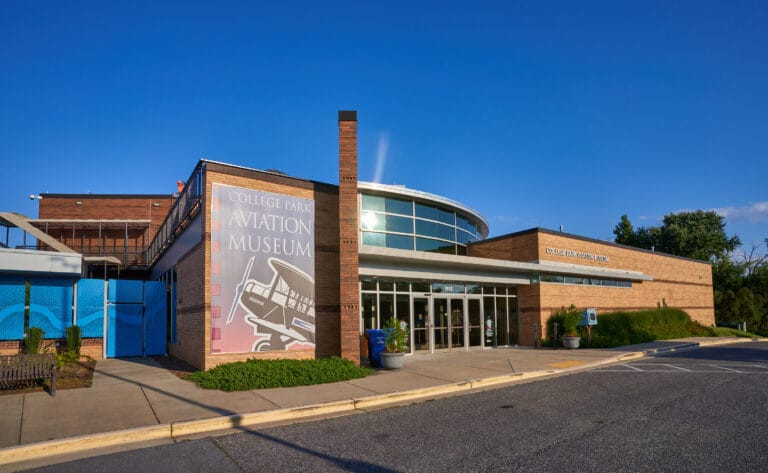The Wright brothers, Orville and Wilbur, conducted their historic first flight on December 17, 1903, at Kill Devil Hills, near Kitty Hawk, North Carolina. The area was chosen for its steady winds, soft sandy landing surface and relative remoteness because it was a beach.
The dunes provided a natural incline for testing gliders before powered flight. The sandy surface offered a forgiving landing area, reducing the risk of damage to the aircraft.
Six years later, the brothers established the world’s first airport, College Park Airport. Located in College Park, Maryland, USA, it was established in 1909 and holds the distinction of being the oldest continuously operating airport in the world. It was initially used as a training site for military aviators and hosted the first airmail service trials in the United States in 1918.
Today, College Park Airport serves as a living museum of aviation history. It operates a small number of general aviation flights and houses the College Park Aviation Museum, which showcases its rich legacy.
First air cargo warehouse
The unlikely setting of the world’s first airfreight warehouse lies at the former Croydon Airport in south London. Just 18 years after the Wright brothers flew at Kill Devil Hills, across the Atlantic the world’s first dedicated air cargo warehouse was opened at Croydon Airport which had opened in 1920 as London’s first major international airport and quickly became a central hub for early air cargo operations.
Croydon Airport (ICAO code EGCR) was the UK’s only international airport during the interwar period. It opened in 1920, located in the outskirts of Croydon, then part of Surrey. Built in a Neoclassical style, it was developed as Britain’s main airport, handling more cargo and mail than any other UK airport at the time. Innovations at the site included the world’s first air traffic control and the first airport passenger terminal.
The air cargo warehouse at Croydon Airport opened in 1921 which had instigated the world’s first international air cargo service. It played a pivotal role in the early development of commercial aviation and airfreight.
The warehouse was part of the infrastructure that supported this growing industry, facilitating the handling and storage of goods transported by air. Croydon Airport itself became a major hub for pioneering aviation advancements until it ceased operations in 1959.
Not to be left behind, the United States saw its first air cargo warehouse ‘Hangar No. 1’ which was the first structure at LAX. Built in 1929 and restored in 1990, it remains in use. In 1926, the Los Angeles City Council and the Chamber of Commerce had recognised the need for the city to have its own airport to tap into the fledgling, but quickly growing, aviation industry.
The air cargo warehouse at Croydon Airport symbolised the recognition of airfreight as a viable mode of transport. Its establishment prompted other airports worldwide to invest in similar facilities, leading to the global network of air cargo infrastructure we see today.
Following the early experiments at Croydon Airport, the importance of air cargo grew exponentially. Key milestones include the use of aircraft for transporting military supplies which demonstrated the speed and efficiency of airfreight during the Second World War. This was followed in the post-war era that saw the development of modern cargo terminals and warehouses at major airports to support growing demand for international trade.
Both College Park Airport and Croydon Airport arguably played pivotal roles in shaping the aviation industry. College Park Airport demonstrated the viability of air travel, paving the way for the establishment of larger, more specialised airports. Croydon Airport set the standard for integrating air cargo facilities into airport design, a practice that continues to evolve with technological advancements.
While Croydon Airport closed in 1959, its legacy is preserved through historical sites and museums. Similarly, College Park Airport remains a testament to aviation’s beginnings, showcasing how airports have transitioned from modest facilities to complex hubs of global connectivity.
The world’s first airport, College Park Airport, and the first air cargo warehouse at Croydon Airport represent milestones in aviation history. College Park laid the groundwork for the development of airports, while Croydon pioneered the concept of organised air cargo operations. These achievements underscore the transformative power of aviation in connecting people, businesses, and economies. As the industry continues to innovate and expand, the foundational contributions of these early pioneers remain an enduring source of inspiration.




